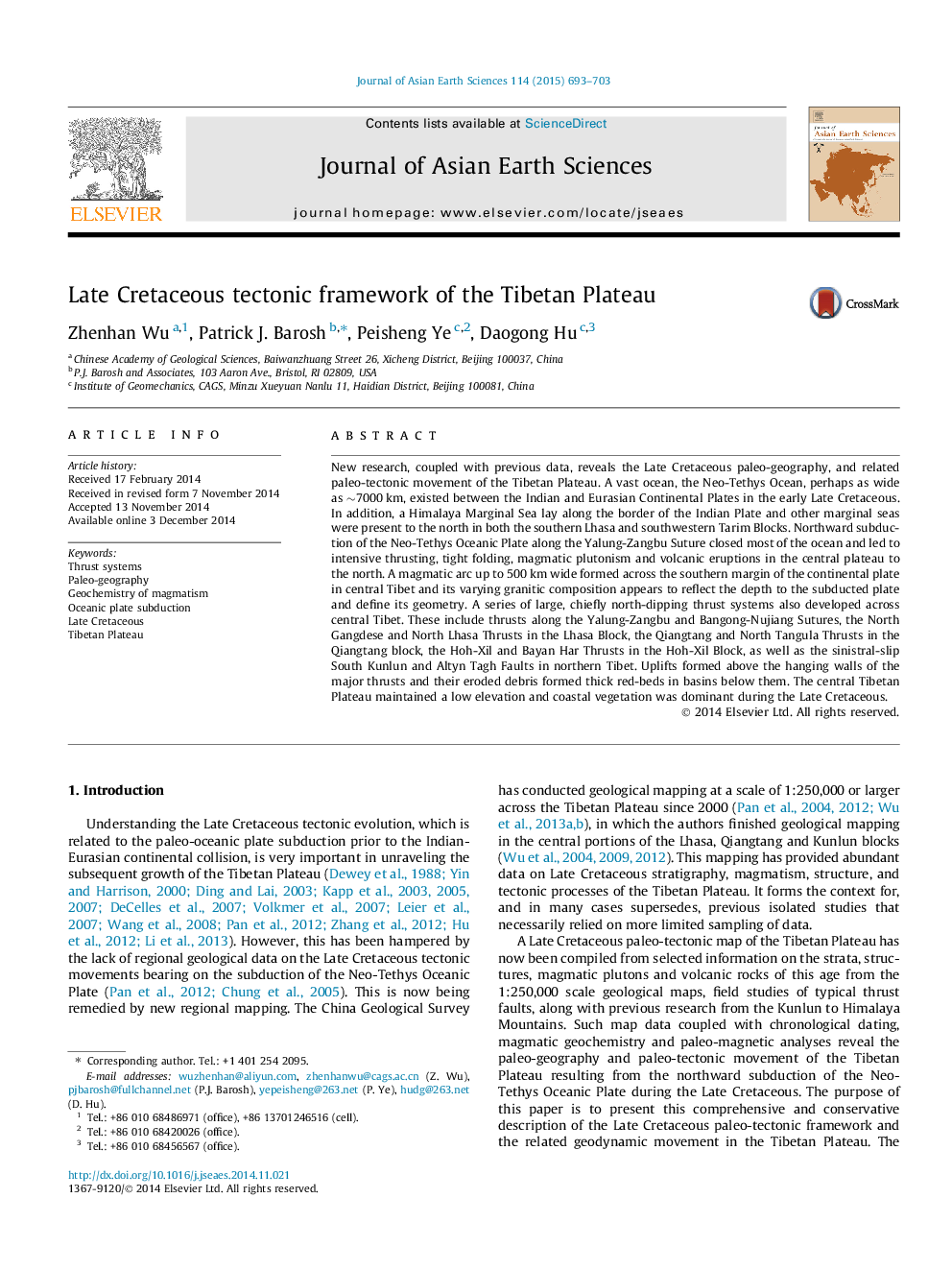| کد مقاله | کد نشریه | سال انتشار | مقاله انگلیسی | نسخه تمام متن |
|---|---|---|---|---|
| 4730087 | 1356735 | 2015 | 11 صفحه PDF | دانلود رایگان |
• The paper presents the changing geography of the Tibetan region during the Late Cretaceous as the Neo-Tethys Ocean is subducted and the Indian Continental Plate collides with the Eurasian Plate.
• This resulted in the development of the great thrust systems across the Tibetan Plateau that form the tectonic framework controlling the important Cenozoic thrust movements.
• Furthermore the granitic magmatism triggered by this contraction indicates the angle of subduction flattens northward at depth.
New research, coupled with previous data, reveals the Late Cretaceous paleo-geography, and related paleo-tectonic movement of the Tibetan Plateau. A vast ocean, the Neo-Tethys Ocean, perhaps as wide as ∼7000 km, existed between the Indian and Eurasian Continental Plates in the early Late Cretaceous. In addition, a Himalaya Marginal Sea lay along the border of the Indian Plate and other marginal seas were present to the north in both the southern Lhasa and southwestern Tarim Blocks. Northward subduction of the Neo-Tethys Oceanic Plate along the Yalung-Zangbu Suture closed most of the ocean and led to intensive thrusting, tight folding, magmatic plutonism and volcanic eruptions in the central plateau to the north. A magmatic arc up to 500 km wide formed across the southern margin of the continental plate in central Tibet and its varying granitic composition appears to reflect the depth to the subducted plate and define its geometry. A series of large, chiefly north-dipping thrust systems also developed across central Tibet. These include thrusts along the Yalung-Zangbu and Bangong-Nujiang Sutures, the North Gangdese and North Lhasa Thrusts in the Lhasa Block, the Qiangtang and North Tangula Thrusts in the Qiangtang block, the Hoh-Xil and Bayan Har Thrusts in the Hoh-Xil Block, as well as the sinistral-slip South Kunlun and Altyn Tagh Faults in northern Tibet. Uplifts formed above the hanging walls of the major thrusts and their eroded debris formed thick red-beds in basins below them. The central Tibetan Plateau maintained a low elevation and coastal vegetation was dominant during the Late Cretaceous.
Journal: Journal of Asian Earth Sciences - Volume 114, Part 4, 15 December 2015, Pages 693–703
